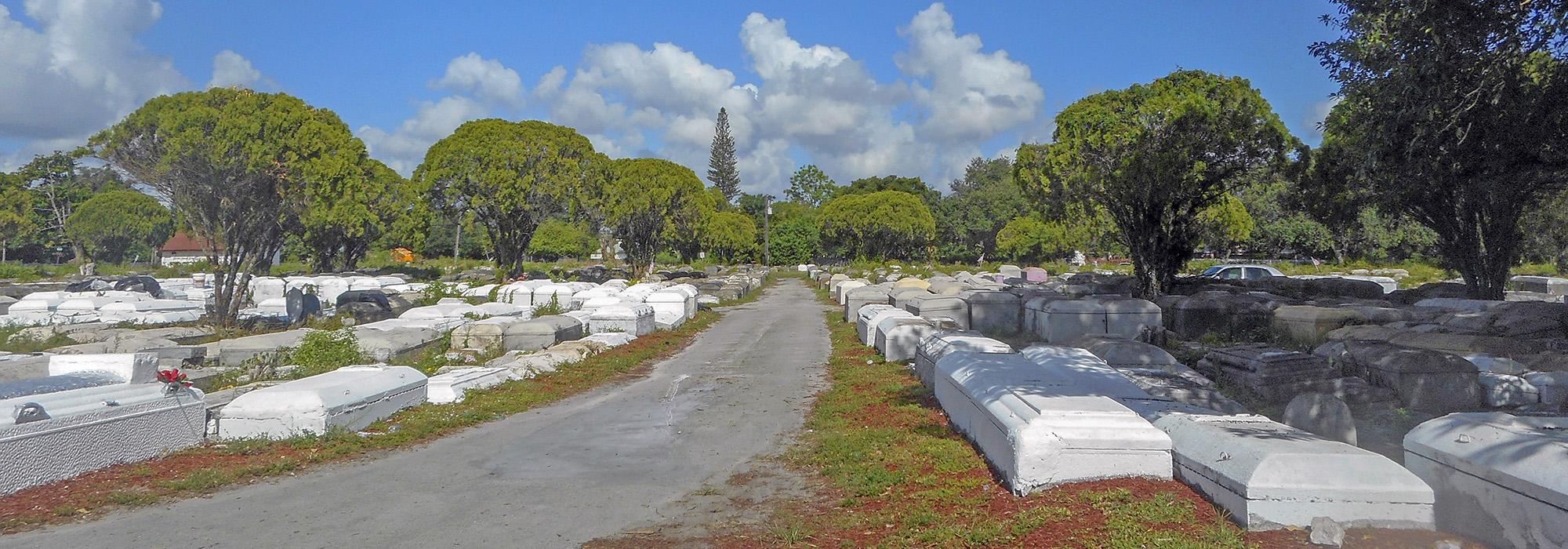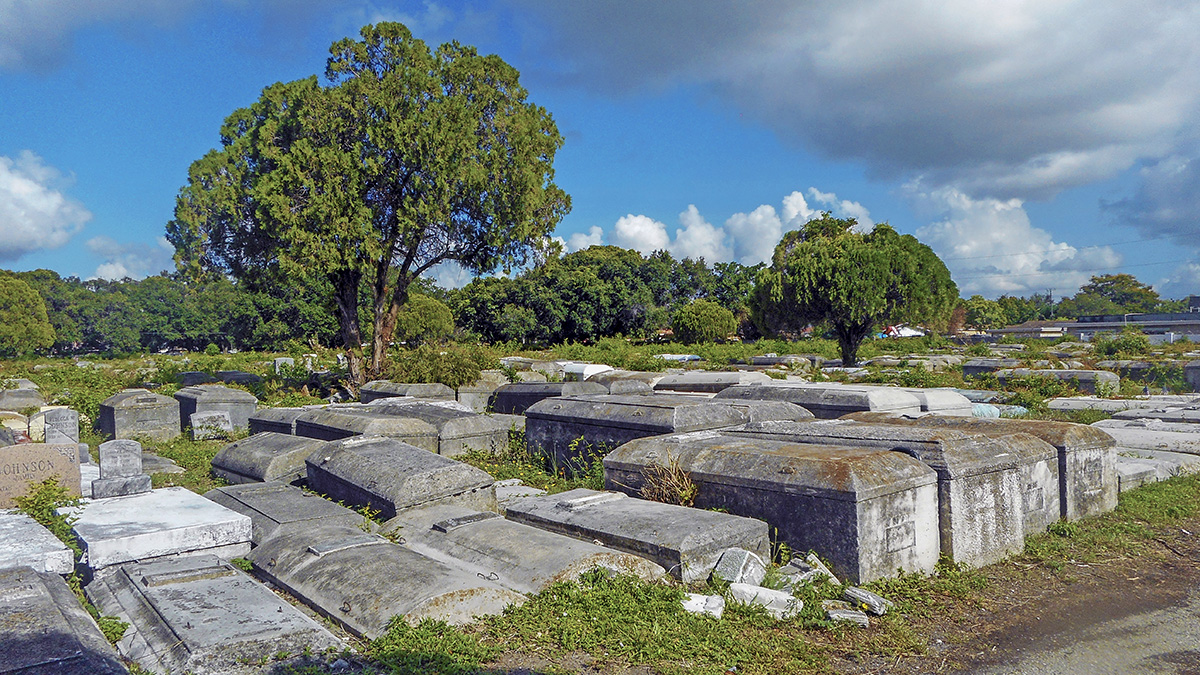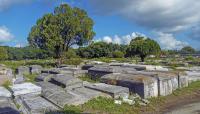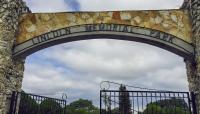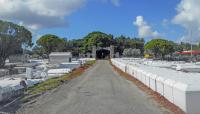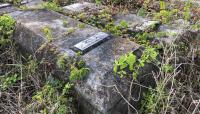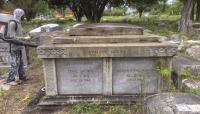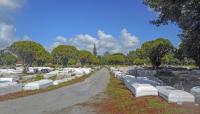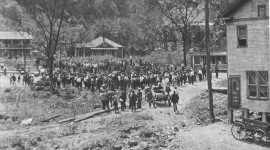Located in Miami’s Brownsville neighborhood, the twenty-acre cemetery was founded in 1923 on a flat plot of ground purchased by African American mortician Kelsey Leroy Pharr. According to legend, a white land owner discovered Pharr secretly burying lynching victims on the owner’s vacant lot. Moved by compassion, the man agreed to sell the property to Pharr for use as an African American burial ground. Following the cemetery’s opening, Pharr continued to purchase parcels of land, eventually consolidating the present twenty acres in 1937. The site was touted as the “finest colored cemetery in the south” and included burials of the wealthy and poor, alike. Today, the cemetery houses the remains of over 10,000 African Americans, including veterans of many wars, from the Civil War to the Iraq War. Some of Miami’s most influential figures are also interred here, including D.A. Dorsey, the city’s first African American millionaire, H.E.S. Reeves, the founder of Miami’s first African American newspaper, and Gwen Cherry, Florida’s first African American female legislator. The cemetery remains in operation today.
The cemetery is contained within a nearly square plot, hemmed in on all sides by urban housing and bounded by a chain-link fence. An arched stone gateway near the southeastern corner marks the site’s sole entrance. An asphalt road leads north into the cemetery, skirting around the current owner’s house and branching off to the east where it intersects with two lanes that loop through the site’s northern and southern sections. Stone sarcophagi, tightly wedged together in disorganized rows, are the landscape’s dominant features. These above-ground graves are representative of an era predating the drainage of the everglades. Lincoln Memorial Park was listed in the National Register of Historic Places in 2018.



